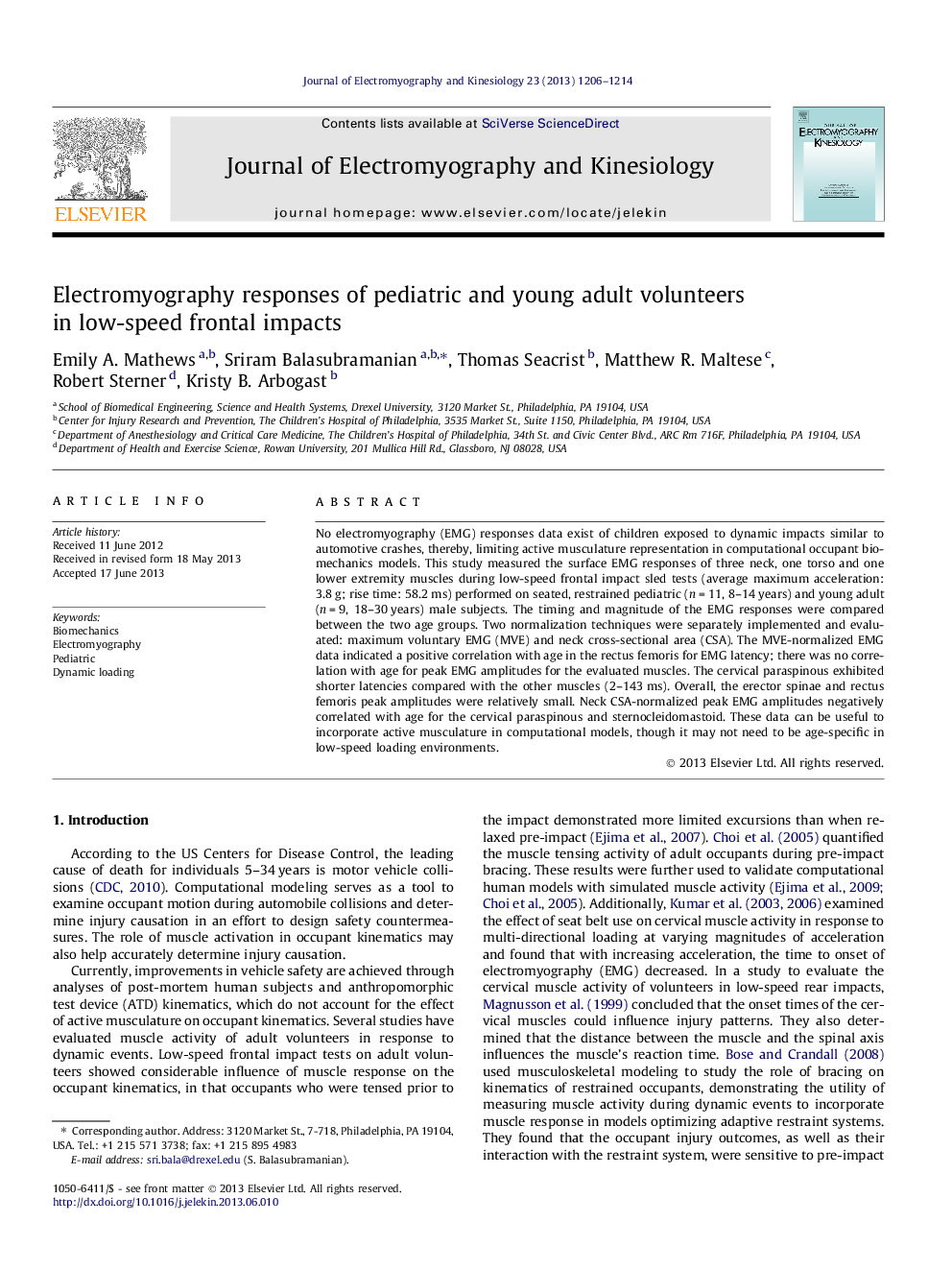| Article ID | Journal | Published Year | Pages | File Type |
|---|---|---|---|---|
| 6210567 | Journal of Electromyography and Kinesiology | 2013 | 9 Pages |
No electromyography (EMG) responses data exist of children exposed to dynamic impacts similar to automotive crashes, thereby, limiting active musculature representation in computational occupant biomechanics models. This study measured the surface EMG responses of three neck, one torso and one lower extremity muscles during low-speed frontal impact sled tests (average maximum acceleration: 3.8 g; rise time: 58.2 ms) performed on seated, restrained pediatric (n = 11, 8-14 years) and young adult (n = 9, 18-30 years) male subjects. The timing and magnitude of the EMG responses were compared between the two age groups. Two normalization techniques were separately implemented and evaluated: maximum voluntary EMG (MVE) and neck cross-sectional area (CSA). The MVE-normalized EMG data indicated a positive correlation with age in the rectus femoris for EMG latency; there was no correlation with age for peak EMG amplitudes for the evaluated muscles. The cervical paraspinous exhibited shorter latencies compared with the other muscles (2-143 ms). Overall, the erector spinae and rectus femoris peak amplitudes were relatively small. Neck CSA-normalized peak EMG amplitudes negatively correlated with age for the cervical paraspinous and sternocleidomastoid. These data can be useful to incorporate active musculature in computational models, though it may not need to be age-specific in low-speed loading environments.
